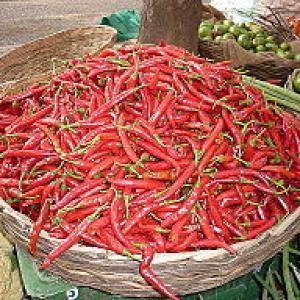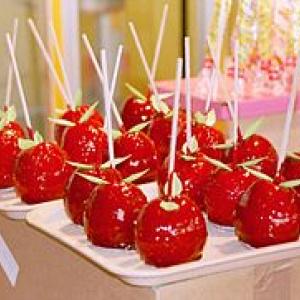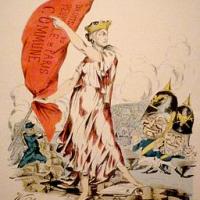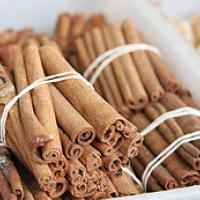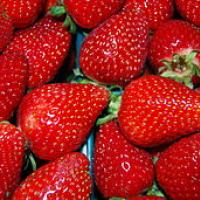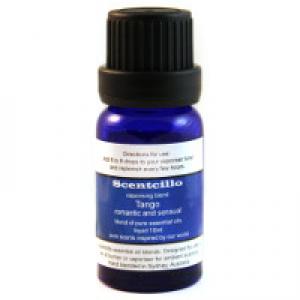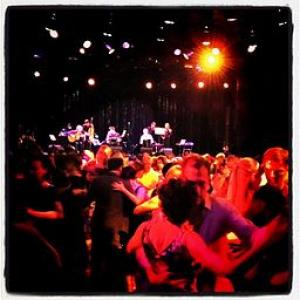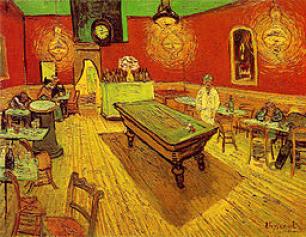Continuing on from the previous post on the colour green, we will take a look at how red colours and corresponding aromas can influence behaviour and emotions.
Red is a colour that is bold and exciting; able to activate and energise us, a symbol of passion, love, beauty, danger and good fortune.
Red colours can vary from bright, dramatic orange or scarlet reds to crimson reds with slightly blue nuances or deeper reds with purple or brown undertones like plum or maroon reds.
In terms of its physical effects, red is a call to action, having a transitory effect on boosting energy levels and making people's reactions more forceful or enthusiastic. The colour has the potential to increase blood pressure, heart beat and pulse rate and also to stimulate the appetite, hence its wide use in restaurants, bars and dining rooms.
On the flip side, red can make it hard to concentrate and reduces analytical thinking. It has been found that people perform worse in cognitive tests on exam papers with red cover slips. This could be a cultural-specific effect as red may have negative connotations due to its use in marking school work or assessments.
What is the meaning or symbolism of the colour red?
Bright reds are perceived as exciting, stimulating, assertive and dynamic hues. They dominate a space and command our attention. I always think of the flamenco term "Duende" in reference to the colour red. Duende, loosely translated, means having soul or spirit; an elevated state of emotion, expression and originality.
They are also colours of passion, sensuality and seduction. Red is a bridal colour in Hindu, Islamic and Chinese cultures and symbolic of beauty and romantic love in many parts of the world. The red rose is the ultimate floral symbol of love and a traditional Valentine's Day gift.
In Chinese five element theory, where colours correspond to primary elements, direction and the seasons, red is associated with fire, South and Summer. Red is a colour of protection, good luck and fortune in several Asian cultures. In Buddhist teachings, red was said to have emanated from the Buddha when he achieved nirvana.
Red is commonly associated with joy and wellbeing, a colour of celebration and ceremony- think of the sayings "red carpet treatment", "red letter day" or "paint the town red".
Red also has semiotic associations with courage and sacrifice and political connections to revolution and uprising.
Deeper shades of red are seen as having mature, cultivated and refined connotations. Brick reds hold earthy, warm, sturdy or country allusions.
In nature, the vivid reds produced by anthocyanin pigments in leaves herald the beginning of Autumn.
In terms of the negative aspects of the colour red; it is a representation of aggression and anger, "seeing red", a symbol of danger or warning, "a red flag" or a sign of economic loss, being "in the red".
What does red smell like?
When we encounter a scent in a particular context, an association with colour, sound, flavour, taste or texture can be formed. This inter-relationship across the senses is what is termed cross-modality.
In the Canadian study mentioned in the colour green post, the colour red was matched significantly with the smells of cinnamon, less so with violet and curiously with the scent of almond. Matching red with an almond aroma is not an obvious association and is not readily explained by a learning bias. Interestingly, an Australian study found that the scent of almonds correlated with the colour blue. Possibly procedural rather than cultural factors were underlying elements producing differences in results. In another study from 2005, a strawberry odour showed a trend toward higher perceived congruence with red than the other three colours.
A study looking at the cultural associations between colour and smells revealed that people from various countries largely agreed that fruity smells and also flower scents were an appropriate pairing with red or pink colours.
Research from Gettysburg College, where people were asked to identify a set of odours with strong colour and shape associations, again showed a cinnamon odour matched with a red colour and also a sharp shape.
It was concluded that colour/odour associations are generally stronger than shape/odour ones as the semantic representation of a scent generally includes its colour, but not its shape. The odours used here were food related so it was postulated that colour/odour matches are firmer because through experience food odours can be encountered in varying shape contexts but colour generally remains consistent.
Scent design with red
Colours and scents provide non-verbal communication about a particular space. Red is best used as an accent colour (10% or less) in the dining room, family room or kitchen as too much can be dominating or overpowering.
Saturated reds convey a feeling of sensuality, unsaturated hues heading towards pink are more friendly and warm. Reds with brown undertones are generally thought of as the best for home interiors, conveying a welcoming ambience.
Using warm colours and lots of light in a space sets our focus on the area we are in and makes us more active physically.
Taking into account the cultural, semiotic, cross-modal and natural influences of the colour red, I will give you some examples of essential oil blends you can diffuse in a space decorated with reds for a superadditive effect of the senses.
Blend 1: Rose Picant
6 parts Moroccan rose absolute, 5 parts blood orange, 4 parts Australian sandalwood, 3 parts roman chamomile, cardamom, 2 parts patchouli essential oils.
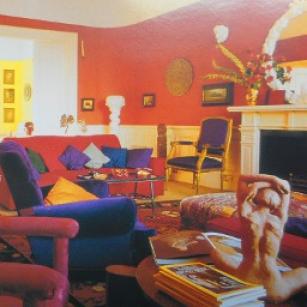
I see this blend as a sophisticated, provocative and hedonistic reflection of this living room which has a bohemian boudoir feel about it. The spicy nuances of Moroccan rose are amplified with the addition of cardamom, a slight raspberry note is added by the blood orange and a tinge of apple from the roman chamomile.
Blend 2: Incendiary
5 parts tangerine, 4 parts Australian sandalwood, 3 parts clary sage,benzoin resin, 1 part cinnamon leaf, clove bud essential oils.
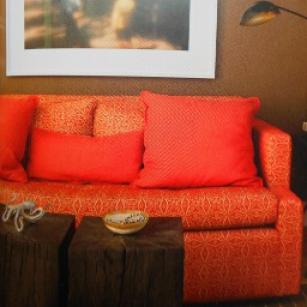
The rich, warming essential oils with touches of pungency from the spicy clove and cinnamon, compliment a contemporary space decorated with reddy-brown shades. This blend synchronises with the uplifting, warm, cozy and welcoming ambience generated by the colour scheme in this particular room.
Scentcillo Tango essential oil blend draws its inspiration from the seductive passion, energy and sometimes bittersweet romance of the multi sensory dance of tango. The sweet, indulgent aroma of this blend creates a romantic and intimate ambience, suitable for when you want to create a "red" mood in your space.
Further reading
- The Campo Viejo experiment of 2014 in London was the world's largest multi sensory wine experiment. It was found that placing a red light bulb in a side lamp to create warmer lighting tones brings out the fruit notes in fruity wines and playing sweet music with red lighting in the background increases the intensity of your wine and improves the taste experience. Read more here from the Daily Mail.
- BBC Future: How the colour red warps the mind.
- Weather Patterns: The Smell of Red by Nathaniel Stern. An ecological installation asking how the smell of red (in this case cinnamon) affects the event of time.







